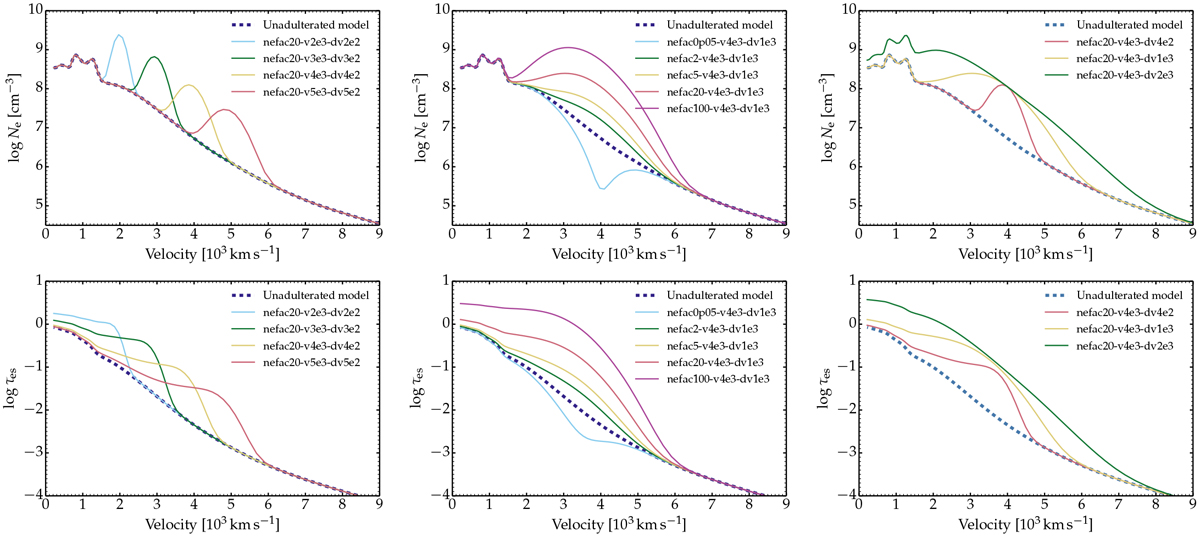Fig. 2

Illustration of the adjustments to the electron density in the adulterated model in order to mimic the influence of a 56Ni blob – these configurations would be shells in a 1D context but correspond to a blob in our 2D hybrid model setup. The blob radial (electron-scattering) optical depth is equal to the difference in radial optical depth (bottom row panels) along a direction intersecting the blob and one that does not (see values in rightmost column of Table 1). The total radial electron scattering optical depth of the unadulterated model is 0.84. Each column represents one set of models that differ in the value of Vblob (left column;fixed δVblob∕Vblob and Ne,fac), of Ne,fac (middle column; fixed Vblob and δVblob), and of δVblob (right column; fixed Vblob and Ne,fac). It should be noted that, in the central column, model nefac0p05-v4e3-dv1e3 represents a 56Ni “hole,” where Ne is reduced relative to the unadulterated model (this model is discussed in the appendix); see text for details.
Current usage metrics show cumulative count of Article Views (full-text article views including HTML views, PDF and ePub downloads, according to the available data) and Abstracts Views on Vision4Press platform.
Data correspond to usage on the plateform after 2015. The current usage metrics is available 48-96 hours after online publication and is updated daily on week days.
Initial download of the metrics may take a while.


